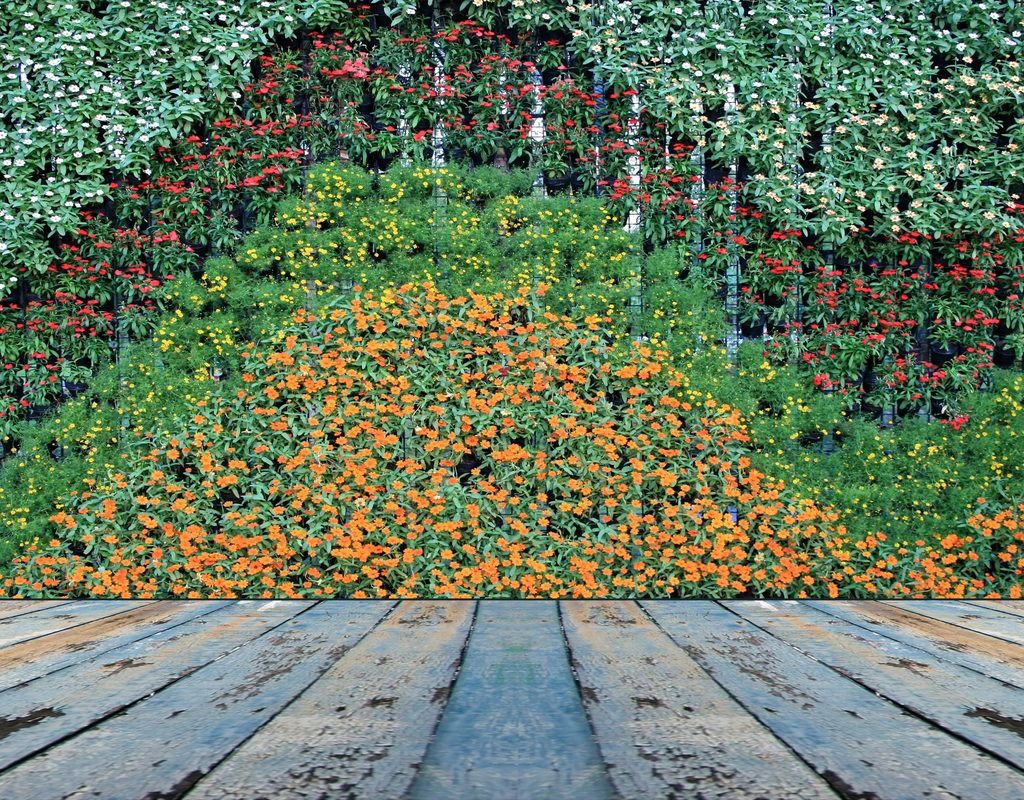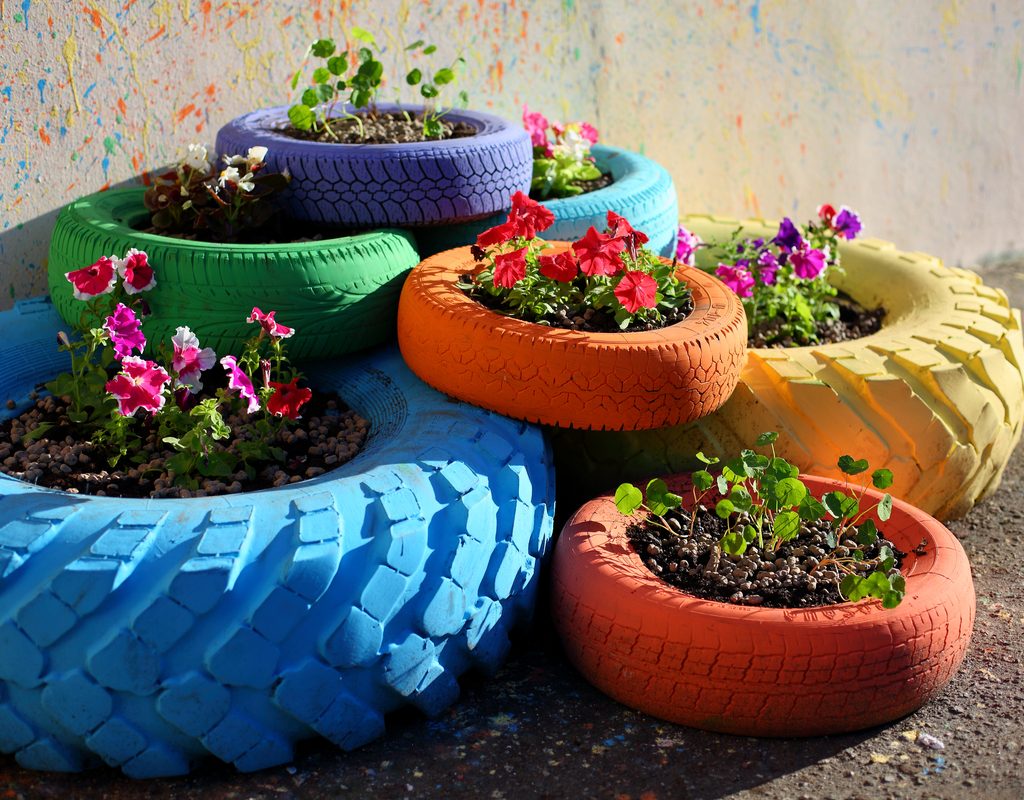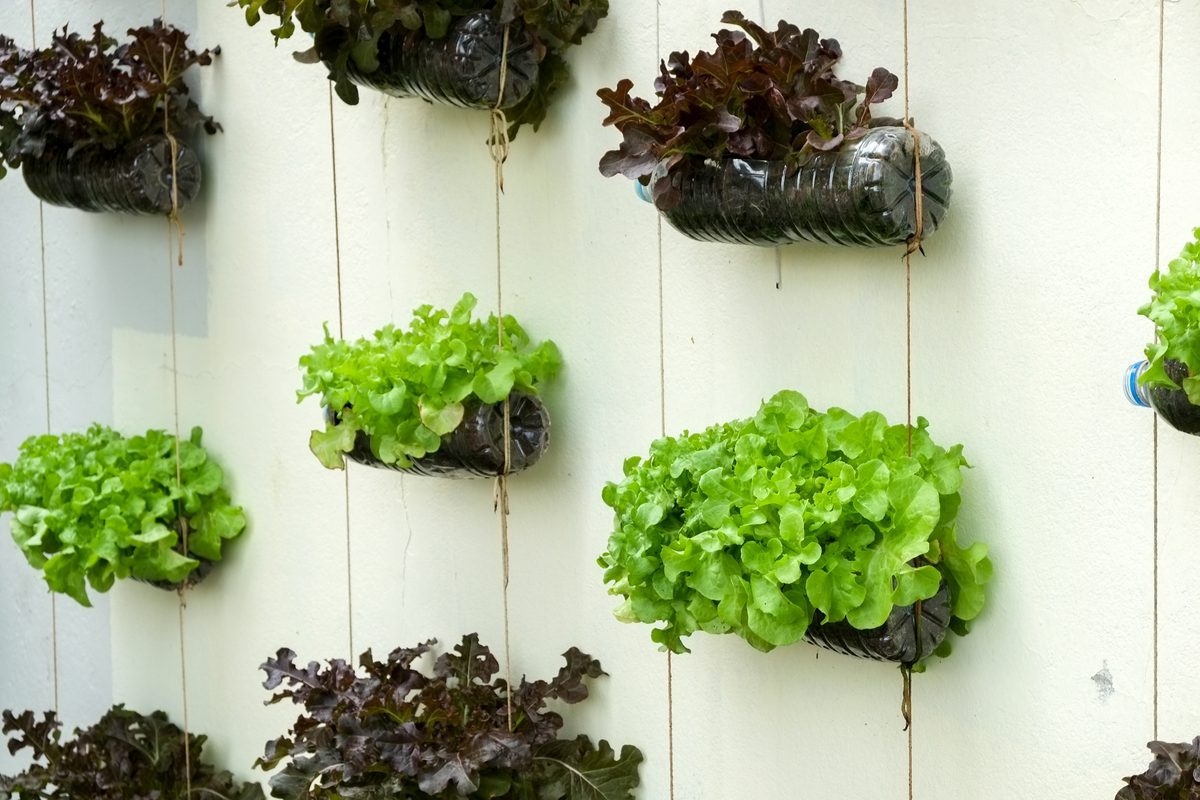Vertical gardens are a fun and effective way to garden. They take up less space, are visually appealing, and there are so many different ways to express your creative spirit through them. While many gardeners want to start a vertical garden, one thing that can sometimes hold gardeners back is the intimidating idea of actually planting and growing a vertical garden. You don’t need to worry about that, though, it isn’t as intimidating as it first seems! In this simple guide, we’ll cover how to choose starter plants for your garden, and then break down planting and care instructions based on the type of vertical garden.
Choosing your plants
There are a few things to consider when choosing plants for your vertical garden. The size of the plant is a factor since vertical gardens tend to have limited space for each plant and repotting a plant from a vertical garden can be a hassle. Stackable and pocket gardens can be planted with almost any type of plant, since the garden is vertical but the plants are also still vertical. Hanging frame-style gardens, which consist of a vertical garden with horizontal plants, typically do better with smaller plants, succulents, and vining plants.
No matter what type of plant you choose, there are a few things to look out for. Only buy the healthiest plants, and check plants carefully for signs of damage and disease. In general, for vertical gardens, favor younger plants over older plants. Finally, make sure you know what lighting conditions, moisture levels, and temperatures your plants prefer. Be certain that your plants agree with each other and with where the garden will be stationed.
Stackable containers
Stackable containers are the easiest to plant and care for, as they are not at all dissimilar to regular container gardens. You can either plant each layer and then stack them, or stack the layers and then plant them. Either way works, it’s just a matter of preference. However, it is generally recommended to water them after stacking, since water can make the layers quite heavy.
You can plant and care for stackable containers just like you would regular containers with a few minor considerations. When planting, take plant size into account. Your largest plants should be on the bottom with your smaller ones on top. Alternatively, plant your larger plants on top and plant the bottom layer with shade-loving plants. The other consideration is to be sure all your layers are getting watered.
Pocket gardens
Pocket gardens are vertical gardens that hang but have plants planted in individual pockets, cups, or pots. They may be all in one piece, like you might see in a door organizer, or be disconnected, such as a series of flower pots mounted on a wall. They are a little trickier but still easy to plant. You can plant them before or after hanging the garden, depending on your preference. Planting them before hanging is generally easier, but if you do choose to hang and then plant, have a table close by to set your plants on so you don’t have to get up and down.
With pocket gardens, it’s important not to overfill a pocket with soil. Overfilling could lead to spilled soil or to your plant falling out of the pocket, depending on how overfilled it is. If your pockets are all in a row, be sure to plant your larger plants at the bottom, so all your plants get equal sun. If the pockets are staggered, you have a little more leeway with it. As with stackable containers, water carefully to be sure all pockets are getting enough water.

Hanging frames and green walls
Hanging frame-style vertical gardens can take a variety of forms, but one thing they all have in common is they hang against a wall and have plants that are horizontal rather than vertical. Green walls are one common version of this style of vertical garden.
These are the trickiest to plant but are still not too difficult. They can be planted before or after hanging, although some, such as green walls that are set into a wall, may require planting after installation. Regardless, caution is key. Expect to lose a little soil, but you can avoid larger losses by securing your plants with wire mesh.
Depending on the type of plants you’ve chosen, you may be able to water this type of garden normally with a water hose. However, if you’re growing succulents or other plants that hate getting their leaves wet, a drip irrigation system is a much better option.
Now you’re ready to start your very own vertical garden! No matter which style of vertical garden you choose, hopefully you’ve found this guide helpful. Remember to choose the healthiest plants, consider sizes and needs carefully, and be gentle when planting your plants. Most of all, enjoy your vertical garden and all the many benefits it brings!




